The ASUS ROG Phone III Review: A 144Hz 6000mAh Beast With Caveats
by Andrei Frumusanu on August 28, 2020 9:00 AM EST- Posted in
- Mobile
- Smartphones
- Snapdragon 865
- ROG Phone III
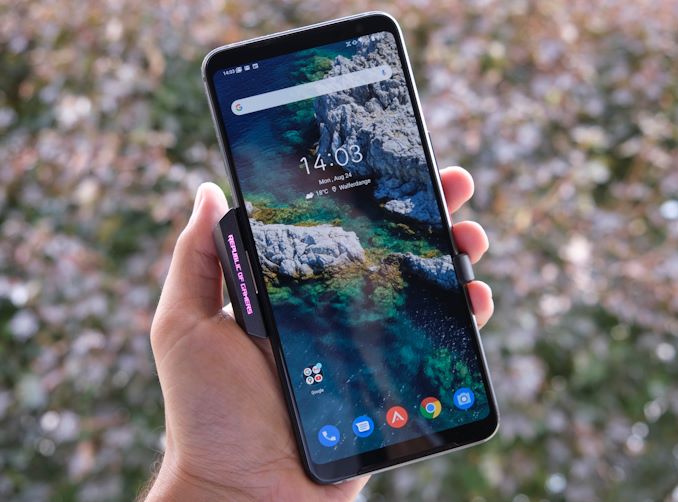
ASUS’s ROG Phones over the last few years have been devices of interesting differentiation, with the company delivering experiences that stood out from the crowd in one way or the other. This year, the new ROG Phone III doesn’t quite represent an as radical change compared to its predecessors, however ASUS makes some important upgrades and improvements to the popular gaming phone formula, updating the ROG3 to the newest Snapdragon 865+ SoC, introducing a 144Hz display, as well as most importantly, improving the every-day camera experience of the device.
This year, ASUS does things a little different in terms of model variants of the phone and their availability, releasing three SKUs with different price points ranging from 799€ to 1099€, with also differences going beyond the usual RAM+storage options as the SoC on the base variant also is different from its more expensive siblings. Let’s go over the spec sheet in more detail:
| ASUS ROG Phones | ||||||
| ROG Phone III | ROG Phone II | |||||
| SoC | Qualcomm Snapdragon 865+ 1x Cortex A77 @ 3.1GHz 3x Cortex A77 @ 2.42GHz 4x Cortex A55 @ 1.80GHz Adreno 650 @ 670MHz |
Qualcomm Snapdragon 855+ 1x Cortex-A76 @ 2.96GHz 3x Cortex-A76 @ 2.42GHz 4x Cortex-A55 @ 1.80GHz Adreno 640 @ 675MHz |
||||
| DRAM | 16 GB LPDDR5 | 12 GB LPDDR4X | ||||
| Storage | up to 512GB UFS 3.1 | 128 / 512GB UFS 3.0 | ||||
| Display | 6.59" AMOLED 2340 x 1080 (19.5:9) 144Hz 270Hz Touch |
6.59" AMOLED 2340 x 1080 (19.5:9) 120Hz 240Hz Touch |
||||
| Size | Height | 171.0 mm | 170.99 mm | |||
| Width | 78 mm | 77.6 mm | ||||
| Depth | 9.85 mm | 9.48 mm | ||||
| Weight | 240 grams | 240 grams | ||||
| Battery Capacity | 6000mAh 30W charging (PD) |
6000mAh |
||||
| Wireless Charging | - | |||||
| Rear Cameras | ||||||
| Main | 64MP IMX686 0.8µm pixels (1.6µm 4:1 16MP) f/1.8 |
48MP IMX586 0.8µm pixels (1.6µm 4:1 12MP) f/1.79 |
||||
| Telephoto | - | - | ||||
| Wide | 13MP 125° wide-angle f/2.4 |
13MP 125° wide-angle |
||||
| Extra | 5MP Macro | - | ||||
| Front Camera | 24MP | 24MP | ||||
| I/O | USB-C 3.1 (Side) + USB-C 2.0 (Bottom) |
USB-C 3.1 (Side) + USB-C 2.0 (Bottom) 3.5mm headphone jack |
||||
| Wireless (local) | 802.11ax WiFi-6 Bluetooth 5.1 LE + NFC |
802.11ac Wave 2 Wi-Fi Bluetooth 5.0 LE + NFC 802.11ad (Wireless display) |
||||
| Other Features | Dual Stereo Speakers Under-Display Fingerprint Sensor |
|||||
| Dual-SIM | Dual nanoSIM | |||||
| Launch Price | 8+256GB + S865 : 799€ 12+512GB + S865+: 999€ 16+512GB + S865+: 1099€ |
12+512GB: $899 / £829 / 899€ | ||||
Starting off with the heart of the phone, the new ROG Phone III is amongst the very first devices on the market sporting Qualcomm’s newest Snapdragon 865+ processor, and this is one of the ways that ASUS wants to differentiate itself from other phone manufacturers at this relative late stage in the device cycle generation.
The new Snapdragon 865+ ups the frequency of the prime CPU core from 2.84GHz to 3.1GHz, making this the very first mobile chip to break the 3GHz barrier, and then some, and the ROG Phone III amongst the first phones to be able to claim this. Alongside the CPU boost, we’re also seeing a 10% GPU frequency increase to 670MHz on the part of the Adreno 650.
Interestingly enough, the lowest-end model of the ROG3 makes due without the Snapdragon 865+, instead using the regular 865 which had been deployed in other competitor devices throughout the year. This variant also has 8GB of RAM and has the smallest storage capacity at 256GB, but does come significantly cheaper at 799€, versus the next-tier model at 999€, but does offer 12GB of RAM and 512GB of storage. There’s also a 16GB RAM variant at 1099€, but availability is currently spotty and frankly there’s very little benefit from the extra 4GB.
Design-wise, the ROG Phone III is very similar to its predecessor. On the part of the display, we’re still seeing a 6.59” 19.5:9 2340 x 1080 OLED display, and from the front of the device, you’d really struggle to see much of a difference to the ROG Phone II.
One area of improvement on the part of the screen is the addition of a 144Hz refresh rate option, as well as the raising of the touch controller sample rate from 240Hz to 270Hz. Generationally, these are relatively minor additions compared to the massive jump we’ve seen last year, but at least on paper it does give ASUS the slight edge in terms of specifications.
There’s no notch or punch-hole camera design here and that’s by design due to the phone’s two massive front-firing speakers that reserve quite a bit of bezel area at the top and bottom of the screen.
The back of the phone is also quite similar in design to that of the ROG2, with a few key adjustments. Key design feature still remains the phone’s ROG logo at the centre of the phone which has RGB backlighting that you can control from the software side.
The cameras this year are significantly improved: The main sensor has been upgraded to an 1/1.7” IMX686 with 64MP resolution, binning down to 16MP in regular shots. The optics have an f/1.8 lens assembly, with the big caveat that there’s no OIS available.
There’s also an ultra-wide 13MP camera module – which at least on paper seems to be the same as that of the ROG Phone II. It has an f/2.4 aperture and a 125° viewing angle.
Finally, ASUS added in a 5MP macro module as the third camera unit, but frankly as in many other phones this is relatively pointless and quite low quality. Luckily ASUS opted to use an auto-focus motor on the ZenFone 7 ultra-wide which can do double duty as a macro module there, but that doesn’t help the ROG Phone III too much.
Last year the ROG2 had a metallic design element on the side of the phone, which this year has been redesigned, downsized, and now also housed underneath the back glass. The metal piece here actually acts as a heatsink and has thermal paste to it, bonded to the back of the motherboard behind the SoC, but exactly how this helps the thermal dissipation of the phone is a bit unclear given the glass panel above it.
There’s also a small cut-out above it that tries to be a cooling exhaust, but frankly again I think this is more of a design-aesthetic piece rather than something that actually helps with the cooling of the phone.
The ROG Phone III being a gaming-oriented phone, there’s some extra gaming-only features to it, such as the two extra trigger buttons on the right hand-part of the phone (top side in landscape). These are pressure sensitive buttons and allow for software mapping to configurable virtual buttons when in a game, more on that later.
At the bottom of the phone we find an off-centre USB-C port that’s capable of USB 3.1 transfer speeds. The location is likely due to the large front-firing speaker being in the way. One huge negative of the ROG Phone III this year is that ASUS had dropped the 3.5mm headphone jack from the body, a functionality that’s now only available via the cooling fan accessory, which comes by default with the phone.
On the left side of the phone we find another USB-C port, alongside a “custom” port that serves as a proprietary accessory port. The black port is fully functional, but you’re not supposed to plug anything into the red port as the OS warns you against it.
Overall, the feel of the ROG Phone III is dominated by the fact that it’s just a very big phone. At 78mm width it’s wider than an S20 Ultra, and it’s 240g weight also makes it quite fat and heavy. Of course, that’s partly some of its allure as the internal 6000mAh battery is simply the biggest in the market in this flagship smartphone category.
Given the target audience of the phone ASUS is trying to cater to, I think there’s very little to criticise the ROG3 in terms of design and handling. The rest will depend on how it performs…


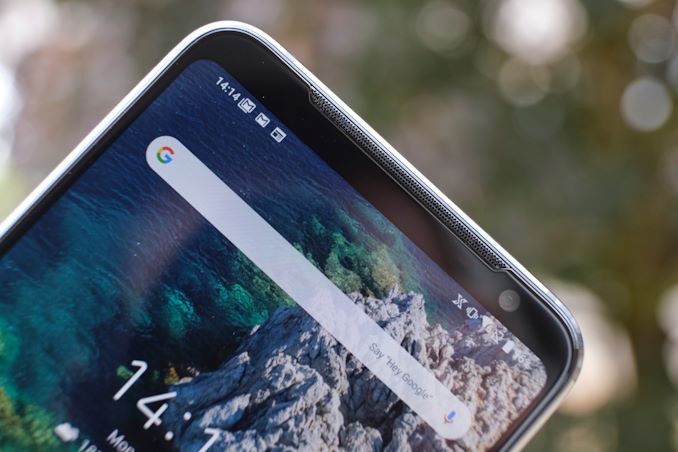
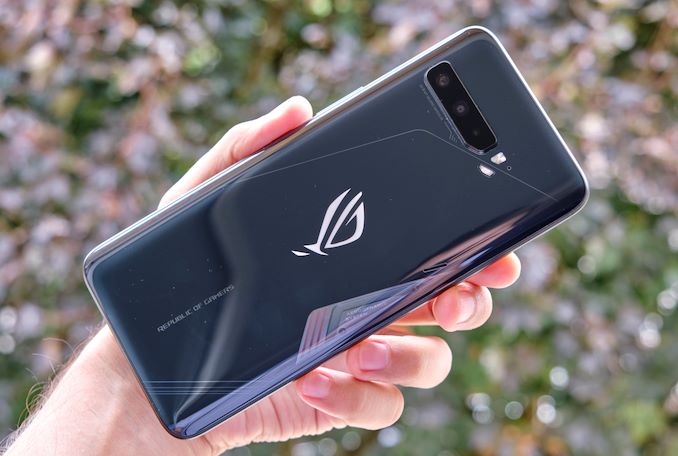
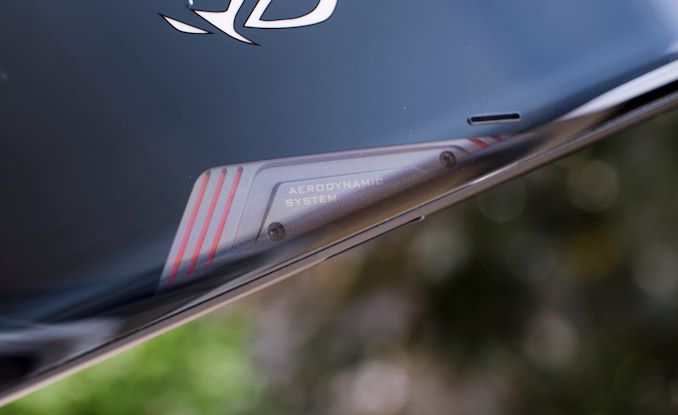
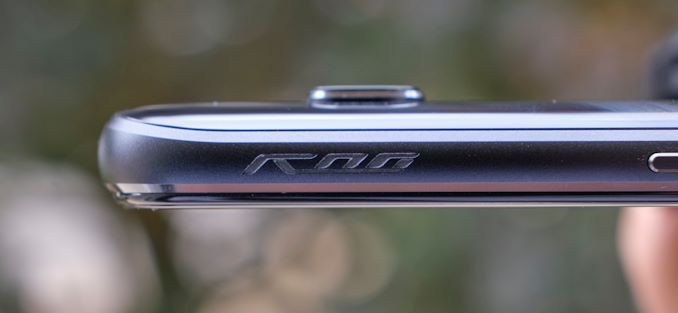










71 Comments
View All Comments
ArcadeEngineer - Friday, August 28, 2020 - link
I don't get this idea that bluetooth headphones are somehow more convenient than wired ones. Having another charger to juggle outlets on is the opposite of convenient.Tchamber - Friday, August 28, 2020 - link
I use my headphones all day work. For fun, I can listen to music, whatever. But I'm standing, walking, bending over and leaning in my CnC mill all day long, and having a cord was a hassle for me. That's pretty much the only place I listen to my phone. For me, it's no hassle having one more plug, especially when my LG Tones last two days at work.ads295 - Saturday, August 29, 2020 - link
High five from someone who owns two Swiss-types :-)flyingpants265 - Sunday, August 30, 2020 - link
Of course it's not a f****** hassle.The reason for deleting headphone jack is to sell wireless headphones, it is a multi-billion dollar market on its own. This is a tech website, everyone should know this by now.
Comments about removing the 3.5 jack, have been bought and paid for. Haha. What I mean is, Corporations have successfully used money for advertising and other various influences to ultimately engineer legions of smooth-brained human beings to tell me that plugging in my headphones is bad. Yeah, ok. I'll do anything you want. Why don't you just sodomize me too while you're at it?
Great_Scott - Monday, August 31, 2020 - link
The good news here is that there's a cottage industry of USB-C sound cards with 3.5 jack support for phones like this. And the huge battery means that you wouldn't need to charge it at the same time...s.yu - Wednesday, September 2, 2020 - link
You don't. Because there are two C ports. As long as there exists flagships with headphone jacks or two C ports, I will not buy one with one C port no jack.Quantumz0d - Friday, August 28, 2020 - link
Tell me does any of those BT sets have a good driver to boot, and then tell me whether any of them support AptX technology to be able to play my FLAC files / 24 Bit files or Can they work without an app always to function.Dude I have a V30 with me, the ESS DAC in that is not possible to be beaten by any company, I even have a Modi stack with me for monitors, and I can plug in my IEMs, Monitors, HD600s and I don't have to fiddle with some stupid charging box and worry about them, my IEMs are Triple Drivers with Hybrid technology. And you say you want Audio fidelity ? nice joke esp with Power Beats ? Muddy Bass technology is what they have.
I'm sorry there's none of the BT technology which makes any aspect from Sound quality, Fidelity, Convenience & Price to Performance, there are NO BT sets in mainstream that we can buy which have stunning audio performance you need to shell out for MMCX, like Shures.
Let me tell you one more thing, my phone has BT as well, and I can buy any BT set I want and a 3.5mm enabled any of the ChiFi or Japanese or European IEMs/Cans. Also instead of that overpriced Powerbeats Apple set go and buy an RHA T20 wireless, it has AptX, great battery, superior sound, superior build quality and have 3.5mm wire also.
vol.2 - Friday, August 28, 2020 - link
you're just walking into a dumb argument here. people are allowed to like their specific wired headphones and they should be able to use them if they want to. i have both; i use the bluetooth for calls and watching youtube, i use one of my many pairs of wired headphones for music.Tchamber - Friday, August 28, 2020 - link
Sure, I didn't think I was arguing though. I get it, wired headphones sound better.Lolimaster - Sunday, August 30, 2020 - link
Thing is, the two technologies can coexist till the end of time. Point is, there's no excuse to remove the jack from a phone or worse, from a tablet (S7 line). Then ironically, gigantic camera bumps are protruding from phones in futile attempt to keep the rest of the phone "slim". 0.9 or 1cm thicc phones are perfectly fine, that's around my S9 + cover included and that phone feels way more secure in the hand than the stock 0.85cm.